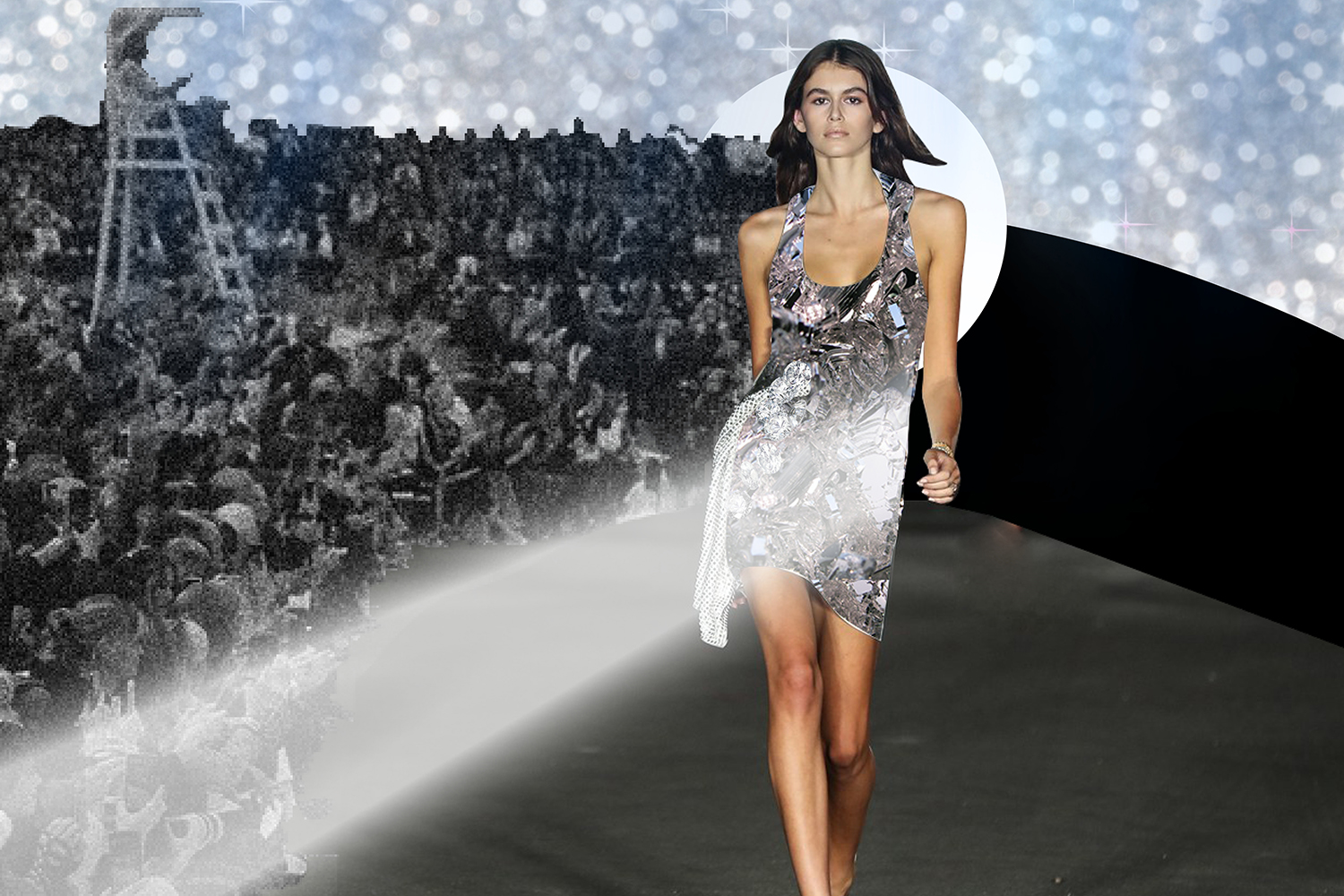When thinking of fashion, one of the first things that come to mind is the fashion show. Historically the shows were an important and exclusive channel for designers to showcase their newest creations, but fashion has evolved greatly since their conception.
Up until the seventies, fashion shows were discreet events only open to industry members and clients. Designers either showcased collections in personal ateliers or in chic ballrooms. Shows provided customers with an intimate interaction with the newest designs.
Then an astronomical boom of print media and magazines took place in the 2000s. The increase of media exposure boosted the scale of shows. Designers such as Alexander McQueen and John Galliano used the runway as opportunities to fuse their creative vision of fashion, art and theater into large production phenomenons.
For the closing act of Alexander McQueen’s 1999 S/S show, he featured model Shalom Harlow twirling gracefully on a revolving wooden platform. The audience watched in shock, as two robots emerged and started spray painting Harlow in yellow and black. The scene was horrifying, but the act was audacious, innovative and memorable.
Throughout his helm as creative director at Dior and his namesake brand, John Galliano had always championed the theatrical quality of fashion. In 2009 for his F/W fashion show, Galliano recreated a dreamy winter wonderland. Models clad with beautiful garments inspired by Russian-Balkan folklore appeared from a snowy tunnel. The escapism of the set paired with Galliano’s dreamy designs captured the mood of the moment perfectly.
Fast forward to 2010 and the explosion of social media. Bloggers, influencers and celebs stepped on the scene. The variety of channels with which people are able to broadcast fashion news exponentially increased.
In a reactionary manner, designers and brands started to utilize social media as a tool for marketing and advertising. Shredding away any trace of intimacy, fashion shows became larger than life live streamed events. Elaborate constructions and performances aim to not only mesmerize the guests present at the show but also to attract the attention of millions of online users.
Brands that cater to younger audiences are naturally even more in tune with the power of social media. New York native Alexander Wang built his brand on the concept of fashion entertainment. Wang is extraordinarily adept at utilizing social media as a media outlet. From opting not to show on the NYFW calendar, to hosting WangFest in the streets of New York City, Alexander Wang knows how to make waves on the internet.
This trend tipped the balance between the spectacle and the actual designs, and an increasing number of brands are placing more focus on show design rather than on the actual design of the clothes. No longer are set design and branding assisting elements; they have now become the main focus.
As one of the most well-known couture houses, Chanel stages many fashion shows each year: from meters d’art to haute couture to ready to wear. The Chanel sets of recent years are known to be extremely large and awe-inspiring. However, there has also been a rise of complaint in the industry about the lack of creativity of the clothes.
In the ready to wear collections, trendy elements such as PVC and athleisure are readily incorporated; but disappointingly, the silhouettes of Lagerfeld’s designs have not really evolved in the past decade. Mammoth beaches and rockets cannot keep audiences distracted from the lack of focus on design.
Ultimately, there is no right or wrong answer to what a fashion show should look like in 2018 because fashion represents the zeitgeist. Nevertheless, the dramatic change occurring in fashion shows is worth examining. We all look to fashion for creative inspiration, so when the only thing that’s left on the scene is a commercial parade, does fashion lose its magic a little bit?
Written by Li Jiahe (Amber)
Graphic by Alexa De Paulis

